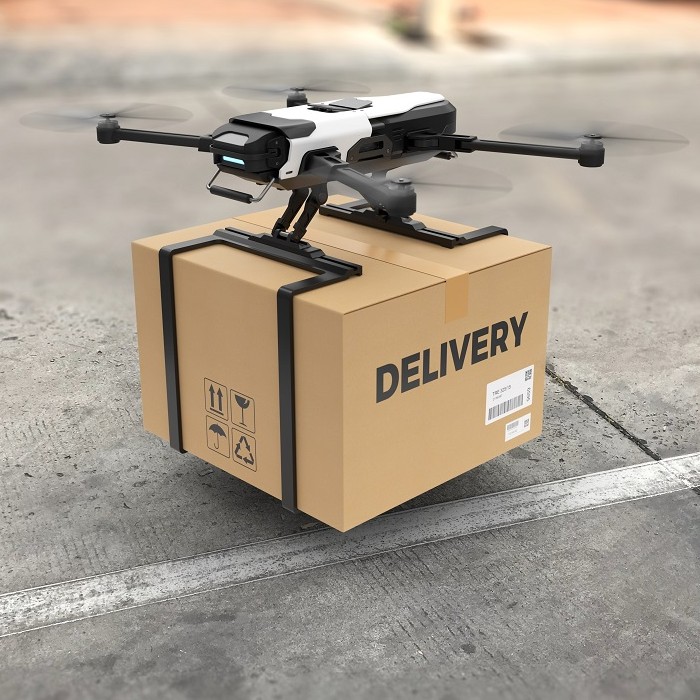More than 800 million people around the world do not have enough to eat, according to the United Nations World Food Program. And yet, the World Wide Fund for Nature (WWF) estimates that 2.5 billion tons of food is wasted globally every year. That’s approximately 40% of all the food that’s cultivated by farmers.
It’s as if four bags of groceries are left to spoil in the parking lot for every 10 that you bring home.
Clearly, food waste is a humanitarian issue. But the effects of food waste don’t just hurt people. They also hurt the environment, according to WWF, which says food waste on farms generates 2.2 gigatons of carbon dioxide equivalent, which constitutes 4% of all greenhouse gas emissions from human activity and 16% of all greenhouse gas emissions from agriculture. That’s roughly equal to the annual emissions from 75% of all cars driven in the United States and Europe.
Longstanding efforts to combat food waste include consumer education and the diversion of extra produce to food banks. But considering the depth and breadth of the food waste crisis, solutions from every sector – public, private, and nonprofit – are needed, suggests Nina Sevilla, a program advocate who focuses on food waste and food systems at the nonprofit Natural Resources Defense Council (NRDC).
“We definitely think we need all hands on deck,” Sevilla said. “And we’re really encouraged to see the interest from the business sector.”
The business sector isn’t just interested in food waste, however. Rather, it’s bringing to bear new food waste management technology that can actually help curb it. Among the companies leading the way, for example, are Shelf Engine and Freshspire, whose cloud-based technologies are driving food-saving gains that can help both people and the planet.
Farm-to-Table Food Loss
There are many causes of food waste. In fact, food is lost at every point in the food supply chain – from the farm to the dinner table.
On the farm, everything from misshapen sweet potatoes to waterlogged tomatoes get left in the field to rot. The former because they don’t meet consumer expectations for what sweet potatoes should look like. The latter because they wilt before farmers can save them.
But food loss isn’t limited to farms. Because they lack efficient ordering systems, grocery stores may over-purchase unpopular products or fail to account for shifts in demand due to events like school closures and snowstorms. A restaurant, meanwhile, can make too much bolognese sauce – then watch as diners only trickle in. And at home, consumers load their refrigerators with vegetables intending to eat healthier, only to let them spoil in the refrigerator when they order takeout, instead.
“There are many different drivers, and that’s part of the reason why it’s so hard to quantify and measure and then address the issue,” Sevilla said.
Freshspire: Saving Farms, Supporting Buyers
Raleigh, North Carolina-based Freshspire is using cloud computing to reduce food waste at the point of production. Launched in 2018, it provides order management, vendor management, and data analytics solutions that connect small and mid-sized farms with grocery stores, restaurants, nonprofits and other customers to whom they can sell food that might otherwise be wasted.
Today, the company serves more than 150 active users who have transacted millions of dollars worth of local goods, according to founder and CEO Shraddha Rathod, who was inspired to create Freshspire in high school when she realized that small farmers had no online tools with which to easily source new customers.
While large-scale industrial farms have market-based insights to inform their planting schedules as far as three years in advance, Rathod observed, smaller producers often communicate with customers casually in scattered texts or emails. As a result, their harvest is more imprecise, which means they’re more likely to have surplus crops for which they can’t find buyers.
Freshspire reduces waste by giving smaller growers a means to avoid the guessing game.
“With the supply chain security that we’re providing on our platform, conversations are saved, orders are saved and those nuanced personalizations that happen with smaller buyers and sellers are saved,” Rathod said.
“So you can look back and help plan for the next year.”
Shelf Engine: Optimizing Grocery Store Ordering
Whereas Freshspire targets food loss on the farm, Seattle-based Shelf Engine targets food loss at the grocery store. CEO Stefan Kalb co-founded it upon learning how common it is for grocery stores to guess how much food they should order.
“It’s insane how much product is being thrown out,” Kalb said.
Launched in 2016, Shelf Engine relies on artificial intelligence and machine learning to create accurate grocery orders for some of the biggest grocery store chains in the United States. The solution utilizes five key data streams: sales numbers, delivery information, upcoming planned deals and promotions, miscellaneous details like weather forecasts and school schedules, and – Shelf Engine’s secret sauce, according to Kalb – ground truth that’s sourced by a nationwide field team that visits stores to track what’s happening there.
By ingesting those five types of data, Shelf Engine can predict, for example, how many apples will sell on a given Tuesday. Armed with that information, it then optimizes and automatically submits the grocery store’s next apple order.
Shelf Engine is so confident with its predictions that it agrees to buy back items that supermarkets don’t sell. Working with major chains like Target, Kroger, and Whole Foods, it helped its clients keep 4.5 million pounds of food – enough to fill 57 semi trucks – out of landfills in 2021.
“It’s not uncommon for us to find a customer where the waste rate is over 50%, and these are big customers,” Kalb said. “We can literally take it down to 12%.”
‘Because of the Cloud’
As a food waste solution, technology can accomplish a lot, Freshspire and Shelf Engine agree. Especially cloud computing, which enables fast computing and easy transfer of data so that growers, retailers and consumers can do a better job aligning food supply with food demand.
In fact, the availability of resources in the cloud helped Freshspire launch the first version of its solution in just six weeks, according to Rathod. Going forward, she said, she’s eager to continue enhancing her product to help small farmers further optimize their planting plans and business operations – and in so doing, further reduce food loss.
“We’re able to iterate quickly, we’re able to build on top of what we have better, and also just reach more people in a timely fashion,” Rathod said.
“As industries are catching up with technology and internet access, we’ll be ready to cater to people’s needs better because of the cloud.”
Sarah Lindenfeld Hall is a longtime journalist and freelance writer who writes regularly about the future of work and technology. You can find her on Twitter and LinkedIn.
© 2022 Nutanix, Inc. All rights reserved. For additional legal information, please go here.






